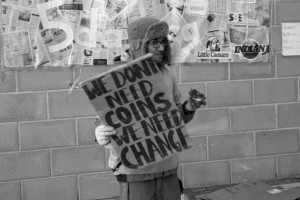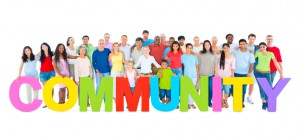by Eric Wang
In community social psychology, before deciding on how to strengthen the group with which they are working, practitioners must first determine from what the group might benefit through a community needs and resources assessment. With this assessment, community psychologists ascertain what resources (e.g., material, social, skills) are, and what resources are not, available to the people with whom they are working. From there, decisions can be made regarding what steps to take in order to address whatever issues are present by improving the availability of, the use of, and the access to those resources (Watson-Thompson, Collie-Akers, Woods, Anderson-Carpenter, Jones, & Taylor, 2015).
Things to keep in mind
When conducting needs assessments, it is important that community workers adhere to the core values of community social psychology. Specifically, the assessment must be participatory between the community and the psychologists. This means that the practitioners must consult with the group with which they are working in order to determine what it is that the group needs and desires. This operation should be both cooperative and ongoing, allowing the community and practitioners to best analyze together the resources in the community (Watson-Thompson et al., 2015).
The assessment should also be prevention-oriented. The community members and psychologists should not only consider the current state of the community, but they should also look at the conditions (e.g., behaviors, resources) that preceded any of the problems that they might be facing. Possible future issues should also be taken into account so that the community can begin to address them as soon as possible (Watson-Thompson et al., 2015).
Furthermore, community psychologists always should maintain an ecological perspective. Effective needs assessments require professionals to scrutinize the contextual factors that are unique to the community with which they are working. Practitioners should address the historical, individual, cultural, social, systemic, and environmental aspects that have an impact on the community (Watson-Thompson et al., 2015).
Lastly, the assessment should be action-focused. When the assessment is complete, the community and the practitioners should know what problems need attention. The assessment should help guide the steps that are taken to solve those problems (Watson-Thompson et al., 2015).
Let us now take a cursory look at the executive summary of the 2013 Greater Lowell Community Health Needs Assessment to see a real world application of these principles.
The 2013 Community Health Needs Assessment of Greater Lowell
Conducted by the University of Massachusetts Lowell, the health needs assessment identified a number of resources related to health in Lowell and its surrounding townships. While they found that the region contained quality health care providers, it was also revealed that certain types of services were limited (e.g., therapists, dentists). These findings satisfy the basic definition of a community needs and resources assessment. The data were obtained using community informants, interviews of community members, and focus groups from the community, making the assessment participatory. The assessment also demonstrated a focus on prevention by determining which groups (e.g., the elderly) within the community were at an elevated risk for disease. The researchers applied an ecological perspective as well by finding social and environmental factors that impacted health (e.g., access to transportation and health insurance). Finally, the investigation emphasized action by discerning specific problems (e.g., language barriers to health care) and making recommendations to address them (e.g., increase interpreter services) (Turcotte & Vidrine, 2013).
Further Reading
The above has offered only a brief overview of part of the necessary framework for learning the needs and resources of a community. Found below are resources that can contribute to a more thorough understanding of the process.
For a more in-depth guide on community needs assessments, visit this website: http://ctb.ku.edu/en/assessing-community-needs-and-resources
To read the executive summary or the full report of the 2013 Greater Lowell Community Health Needs Assessment, check these links:
http://www.lowellgeneral.org/files/dmfile/GreaterLowellCommunityHealthNeedsAssessmentExecutiveSummary2013.pdf [Executive summary]
http://lowellgeneral.org/files/dmfile/GreaterLowellCommunityHealthNeedsAssessmentReport2013.pdf [Full report]
#UML #CommPsych #CommunityHealth #GreaterLowell
Eric Wang is a graduate student in the Community Social Psychology department at the University of Massachusetts Lowell.
References
Turcotte, D., Vidrine, E. (2013). Greater Lowell community health needs assessment: Executive summary. University of Massachusetts Lowell. Retrieved from http://www.lowellgeneral.org/files/dmfile/GreaterLowellCommunityHealthNeedsAssess mentExecutiveSummary2013.pdf
Watson-Thompson, J., Collie-Akers, V., Woods, N. K., Anderson-Carpenter, K. D., Jones, M. D., & Taylor, E. L. (2015). Participatory approaches for conducting community needs and resources assessments. In V. C. Scott & S. M. Wolfe (Eds.), Community psychology: Foundations for practice (pp. 157-188). Thousand Oaks, CA: SAGE Publications.



